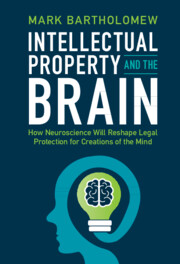 Intellectual Property and the Brain
Intellectual Property and the Brain Book contents
- Intellectual Property and the Brain
- Intellectual Property and the Brain
- Copyright page
- Contents
- List of Figures
- Acknowledgments
- Introduction
- Part I The Law and Neuroscience of Creative Activity
- 1 Copyright and Creativity
- 2 Inside the Design Process
- Part II Understanding Audiences for Art and Advertising
- Part III Using Neuroscience to Improve Intellectual Property Law
- Index
2 - Inside the Design Process
from Part I - The Law and Neuroscience of Creative Activity
Published online by Cambridge University Press: 14 July 2022
- Intellectual Property and the Brain
- Intellectual Property and the Brain
- Copyright page
- Contents
- List of Figures
- Acknowledgments
- Introduction
- Part I The Law and Neuroscience of Creative Activity
- 1 Copyright and Creativity
- 2 Inside the Design Process
- Part II Understanding Audiences for Art and Advertising
- Part III Using Neuroscience to Improve Intellectual Property Law
- Index
Summary
Design patents protect the way a product looks whereas utility patents protect the way a product is used. The law suggests a great disparity between the artistic creation relevant to design patents and the scientific creation relevant to utility patents. The design process is believed to be so personal and subjective that judges refuse to consider any part of a design more important than another. This stands in sharp contrast to the law’s assumptions about scientific invention, which permits objective and focused evaluation of the invention and its prior art. This art/science double standard does not jibe with evidence that the same neural phenomena are at work in all kinds of creative tasks. For scientists as well as designers, both sides of the brain must be engaged in the same process: coming up with an idea, then building on that idea so that it is useful. To earn design patent protection, a claimed design must be “nonobvious” to “the ordinary designer.” To the extent judges refuse to rigorously compare claimed designs against earlier works to determine nonobviousness, they are straying from the way designers actually generate innovative design.
- Type
- Chapter
- Information
- Intellectual Property and the BrainHow Neuroscience Will Reshape Legal Protection for Creations of the Mind, pp. 38 - 54Publisher: Cambridge University PressPrint publication year: 2022


